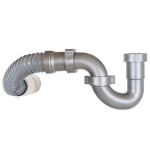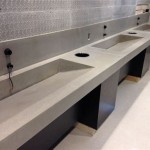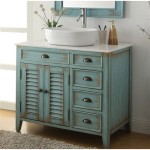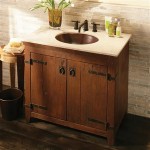How To Clean Bathroom Floor Hair Catcher
Bathroom floor hair catchers, those unassuming guardians of drainage systems, play a pivotal role in maintaining the functionality of plumbing. Regular cleaning of these devices is essential to prevent clogs, slow drainage, and the unpleasant odors associated with decaying organic matter. Neglecting this simple task can lead to costly plumbing repairs and significantly impact the overall hygiene of the bathroom environment. This article provides a comprehensive guide on effectively cleaning bathroom floor hair catchers, encompassing various types, necessary tools, and preventative measures that will contribute to a cleaner and more efficient bathroom.
The accumulation of hair, soap scum, and other debris in hair catchers restricts water flow, creating a breeding ground for bacteria and mold. This, in turn, can lead to persistent foul odors that permeate the bathroom. Furthermore, a fully clogged hair catcher puts undue strain on the plumbing system, potentially causing backups and requiring professional intervention. Routine cleaning not only prevents these issues but also prolongs the lifespan of the plumbing infrastructure.
Before delving into the cleaning process, it's crucial to identify the type of hair catcher installed in the bathroom. While designs vary, most fall into one of a few common categories. These include:
- Drop-in strainers: These are typically metal or plastic screens that sit loosely inside the drain opening. They are easily removable for cleaning.
- Built-in traps: Some drains incorporate a built-in trap or basket that catches hair and debris. These may require a screwdriver or specialized tool for removal, depending on the design.
- Mesh or fabric covers: These are often thin, disposable or reusable covers that fit over the drain opening. They are designed to catch hair before it enters the drainpipe.
Understanding the type of hair catcher in use is crucial for selecting the appropriate cleaning method and avoiding damage to the device or the surrounding plumbing.
Essential Tools and Materials
Prior to commencing the cleaning process, gathering the necessary tools and materials is essential for efficient and effective results. The following items are generally required:
- Gloves: Protective gloves, ideally disposable, are crucial for maintaining hygiene and avoiding direct contact with trapped debris.
- Small trash receptacle: A small disposable bag or container will be needed for the disposal of collected hair and debris.
- Small brush or toothbrush: A small brush, such as an old toothbrush, is useful for scrubbing the hair catcher and removing stubborn residue.
- Paper towels or cloths: Paper towels or cloths are needed for wiping down the hair catcher and surrounding area.
- Pliers or tweezers: Pliers or tweezers can be helpful for removing large clumps of hair or debris that are difficult to extract by hand.
- Drain cleaner (optional): A commercially available drain cleaner can be used for occasional deep cleaning, but should be used cautiously and according to the manufacturer's instructions.
- Baking soda and vinegar (optional): A mixture of baking soda and vinegar can be used as a natural alternative to commercial drain cleaners.
- Screwdriver (if needed): A screwdriver may be required to remove certain types of built-in traps.
Having these tools and materials readily available will streamline the cleaning process and ensure a thorough and hygienic result.
Step-by-Step Cleaning Procedure
The cleaning procedure may vary slightly depending on the type of hair catcher, but the following general steps apply to most models:
- Preparation: Put on protective gloves. Prepare the small trash receptacle for waste disposal.
- Removal: Carefully remove the hair catcher from the drain. For drop-in strainers, this simply involves lifting the strainer out of the drain opening. For built-in traps, consult the manufacturer's instructions for removal. A screwdriver or other tool may be required. For mesh or fabric covers, simply peel off the cover and discard it.
- Initial Debris Removal: Holding the hair catcher over the trash receptacle, remove as much hair and debris as possible by hand or with the help of pliers or tweezers.
- Thorough Cleaning: Use the small brush or toothbrush to scrub the hair catcher, removing any remaining residue, soap scum, or mineral deposits. Rinse the hair catcher thoroughly with water.
- Drain Cleaning (Optional): If desired, and if the drain appears to be partially clogged, use a commercially available drain cleaner or a mixture of baking soda and vinegar to flush the drainpipe. Follow the manufacturer's instructions for drain cleaner use. For baking soda and vinegar, pour about 1/2 cup of baking soda down the drain, followed by 1 cup of vinegar. Let the mixture fizz for 30 minutes, then flush with hot water.
- Reinstallation: Once the hair catcher is clean and the drain has been flushed (if applicable), carefully reinstall the hair catcher. Ensure that it is properly seated and secured. If using a mesh or fabric cover, replace it with a new one.
- Final Cleanup: Wipe down the surrounding area with paper towels or cloths. Dispose of the trash receptacle contents and used cleaning materials properly.
Following these steps will effectively remove accumulated debris from the hair catcher and help maintain a clean and functional drainage system.
Preventative Measures and Maintenance
While regular cleaning is essential, preventative measures can significantly reduce the frequency and intensity of cleaning required. Implementing the following practices can help minimize the buildup of hair and debris in the drain:
- Regular Hair Removal: After showering or bathing, remove any visible hair from the shower walls, floor, and drain area. This prevents hair from entering the drainpipe in the first place.
- Use of Hair Nets: If shedding is a concern, consider wearing a hair net or cap while showering or bathing to minimize the amount of hair that goes down the drain.
- Regular Flushing with Hot Water: Periodically flushing the drain with hot water can help dissolve soap scum and other debris before they accumulate and cause clogs.
- Avoid Pouring Oils and Fats Down the Drain: Oils and fats can solidify in the drainpipe, trapping hair and debris and leading to significant clogs. Always dispose of these materials properly.
- Consider Drain Protection Products: Various drain protection products, such as drain screens and strainers, are available to further prevent hair and debris from entering the drainpipe.
By adopting these preventative measures and maintaining a regular cleaning schedule, the bathroom's drainage system will function more efficiently and require less frequent and intensive cleaning.
Furthermore, the frequency of cleaning the hair catcher depends on several factors, including the number of people using the bathroom, hair length, and shedding patterns. In general, it is recommended to clean the hair catcher at least once a week, or more frequently if necessary. Regularly checking the hair catcher for buildup will provide a good indication of how often it needs to be cleaned.
In situations where a drain is already severely clogged, simply cleaning the hair catcher may not be sufficient. In such cases, additional measures may be required, such as using a drain snake to physically remove the clog or consulting a professional plumber. Ignoring a severely clogged drain can lead to further complications and potentially costly repairs.
The effectiveness of different cleaning solutions can also vary. While commercially available drain cleaners can be effective, they often contain harsh chemicals that can be harmful to the environment and may damage certain types of plumbing. Natural alternatives, such as baking soda and vinegar, are often less harsh and equally effective for dissolving minor clogs. When using any cleaning solution, it is essential to follow the manufacturer's instructions carefully and to take appropriate safety precautions.
Beyond the practical benefits of a clean hair catcher, there are also significant hygiene considerations. As mentioned earlier, accumulated debris in the hair catcher can create a breeding ground for bacteria and mold. This can lead to unpleasant odors and potentially contribute to the spread of germs. Regular cleaning of the hair catcher helps to eliminate these health risks and maintain a cleaner and more hygienic bathroom environment.
Finally, it's important to remember that maintaining a clean bathroom is a collective responsibility. Encouraging all members of the household to be mindful of hair and debris in the drain and to participate in the cleaning process can help to ensure that the bathroom remains clean and functional for everyone.
In conclusion, regularly cleaning the bathroom floor hair catcher is a simple yet essential task that contributes significantly to the overall functionality, hygiene, and longevity of the plumbing system. By understanding the different types of hair catchers, using the appropriate tools and techniques, implementing preventative measures, and maintaining a regular cleaning schedule, one can effectively prevent clogs, eliminate unpleasant odors, and ensure a cleaner and more efficient bathroom environment.

Hair Collector Bathroom Floor Drain Cleaner Catcher Filter For Home Essentials Accessories Temu New Zealand

5pcs Drain Hair Catcher Eeekit Durable Silicone Stopper Shower Cover Trap Easy To Install And Clean Suit For Bathroom Bathtub Kitchen Com

Hair Catcher Durable Silicone Stopper Shower Drain Covers Easy To Install And Clean Suit For Bathroom Bathtub Kitchen 5 Pack Com

Drain Hair Catcher With Suction Cup Durable Silicone Square Cover For Shower Anti Sink Clogging Floor Filter Bathroom Tub And Kitchen Tools Temu

Hair Drain Catcher Square Shower Cover Silicone Stopper With Suction Cup Easy To Install And Clean Great For Loss Suitable Bathroom Bathtub Kitchen 5 Pack White Com

H W Shower Stainless Steel Hotel Easy Clean Bathroom Bouncing Durable Waste Cover Floor Drain Stall Hair Catcher Protector Strainer For Square Antirust

Hair Catcher Shower Drain Durable Silicone Stopper Cover Trap Easy To Install And Clean Suit For Bathroom Bathtub Tub Kitchen 2 Packs Shein

Hair Collector Bathroom Floor Drain Cleaner Catcher Filter For Home Essentials Accessories Temu New Zealand

Good Quality Bathroom Cleaner 10x10cm Hair Catcher 4 Inches 304 Stainless Steel Floor Drain Water Seal For China Toilet Fittings Made In Com

1pc Shower Drain Hair Catcher Stainless Steel Floor Anti Blocking Stopper Sewer Bathtub Cleaning Collection Filter Bathroom Acces Fruugo Bh
Related Posts







